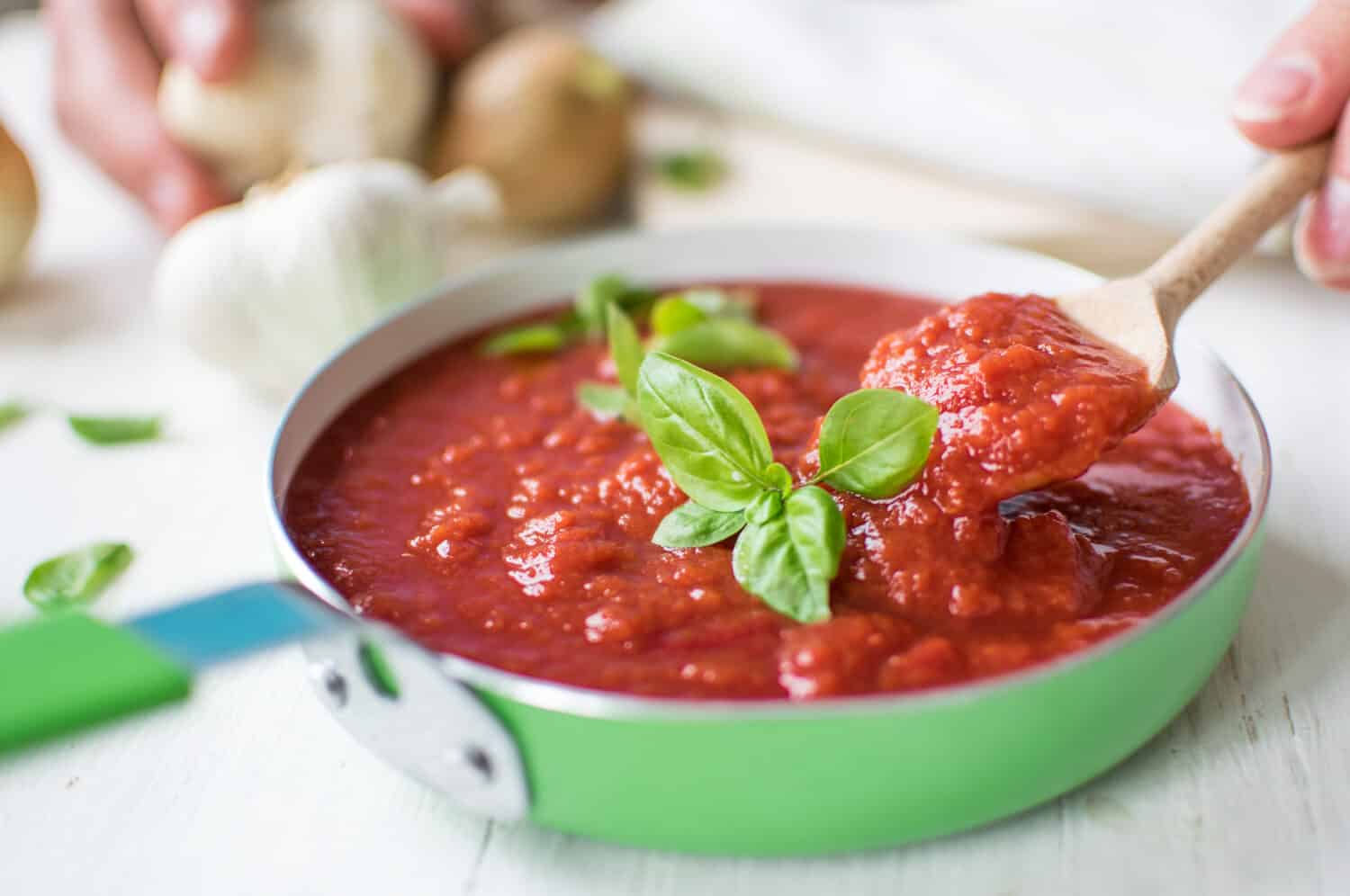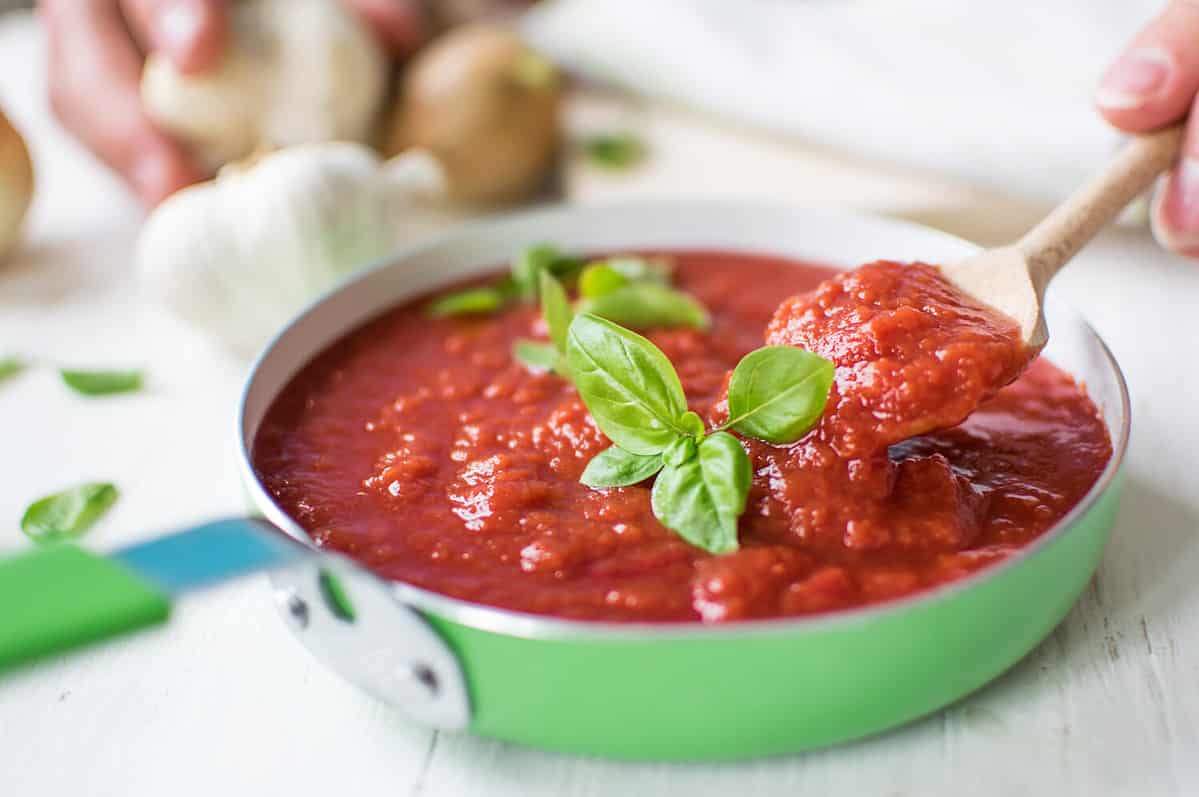

Thai Basil vs. Basil: Why Thai Basil Tastes Different
Thai Basil vs. Basil: What are the differences? While they may look the same, they may make your food taste wildly different. There are hundreds of basil varieties, but Thai and original basil are used for many different recipes and can be confused with either.
Thai and original basil originated in Southeast Asia. However, the differences start when you look at recipes and how they taste. Thai basil is used in Thai cuisine, whereas basil is used in every culture for different purposes. Basil, perhaps, is most prominently used in Italian culture to make pasta and other dishes.
This guide takes a deeper dive into the differences between Thai basil and basil. We look at how they taste different and the different ways to use these basils in recipes.
What Is Thai Basil

©Zuzana Fajmonova/Shutterstock.com
One of the main differences between Thai basil and basil is how the leaves appear. For example, Thai basil leaves are sturdier than typical basil leaves. They also last longer under heat. This is helpful when you're cooking specific Thai recipes.
Another unique thing about Thai basil is that it's a part of the Lamiaceae family. This particular family has peppermint leaves, serrated edges, and purple stems. While basil has other varieties beyond Thai basil, this specific basil is most commonly used in Thailand, Vietnam, Cambodia, and Laos.
What Is Basil?
The unique thing about basil is that it's part of the mint family. It's joined by oregano, thyme, and rosemary. It has a deep green color with distinct edges and a long green stem. If you're looking for good basil at the local store, look for basil leaves with tight, crisp leaves.
One of the most common places you'll find basil is in Italy, France, and California. It gives off a sweeter taste and is typically a part of Mediterranean cuisine.
One of the best things about basil is its eugenol, which is excellent for lowering blood pressure. It also has an abundance of magnesium, which improves your blood flow.
What Are the Differences
While Thai basil and basil are similar in many ways, they also have distinguishing features that make them unique to the meals you make or the cuisine you eat out.
The flavors and taste are the most common differences between Thai basil and basil. You'll notice that Thai basil has more of a licorice taste to it, as well as a hint of spice. Basil has more of a sweetness to it.
If you look at Thai basil, you'll also know it has a different appearance. Thai basil has purple stems, while typical basil has green stems. Thai basil leaves are also sturdier, while usual basil has softer petals.
Another unique difference between Thai basil and basil is how they grow throughout the year. Thai basil is perennial, meaning it grows throughout the year. Basil leaves are seasonal and typically grow for just a year.
What Are the Best Recipes With Either?
Some of the best recipes include either Thai basil or basil. They give the food extra flavor, whether it's that spicy licorice flavor in Thai basil or the sweetness in basil. Either way, you'll discover how much better your food is at home when you cook either one.
Here are the best recipes to make at home with Thai basil:
- Spicy Thai Chicken Basil
- Thai Basil Sauce
- Thai Chili Basil Chicken
- Thai Basil Chicken Bowls
- Pad Thai With Thai Basil
Here are the best recipes with basil:
- Lemon Basil Chicken
- Pesto Basil Sauce
- Spaghetti with Basil Sauce
- Garlic Bread With Basil
- Bruschetta With Basil
- Cucumber Basil Salad
- Basil Pizza
These are some of the best recipes to make with Thai basil or basil. They give you some ideas of what to make. However, you don't want to limit what you can make with either. The more you experiment with either one of these herb leaves, the more you'll realize how many foods they complement from breakfast to dinner.
Thai Basil vs. Basil: What's Better to Cook With?
Thai basil and basil are some of the best herbs to cook with for various reasons. They complement different dishes, whether it's Thai food or American food. You'll typically find that Thai cuisine is best with Thai basil, whereas Italian food is best with typical basil.
Overall, it's important to remember that they hold distinct differences that can enhance the flavor of your food or ruin it if you add the wrong one. Learning about and trying both can give you a better idea of their differences.